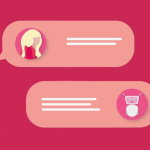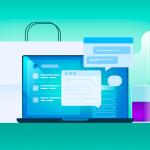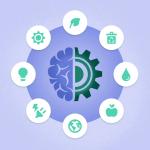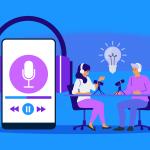What is a target audience? Put simply, it’s the specific group at which your product or service is aimed. Your target audience consists of the people who are most likely to become your customers. Knowing your target audience can help you optimise your messaging, cut marketing costs and create effective sales plans, all while driving long-term loyalty.
Let’s look at some benefits you can unlock by identifying your target audience, and then talk about how you can reach them to give them what they want.
CRM for Small and Medium-Sized Businesses – A Recipe for Success
Building better relationships is more important than ever – see how CRM tools can bring small businesses closer to the customer.

Why is identifying your target audience important?
Knowing your target audience will help you deliver relevant communications and reach the right people with the right offer. Offering blanketed messaging in the current climate is often ineffective, and you’ll pay to make impressions that don’t convert. By being familiar with your target audience, you can deliver highly targeted communications and create more impactful marketing campaigns.
Here are some other benefits of identifying your target audience:
- More personalised engagement. Today’s companies are increasingly competing on customer experience (CX), and a good CX depends on personalising the customer journey. By knowing your audience’s needs and pain points, you can craft experiences that deliver what they need, when they need it.
- A more defined brand voice. Once you know who you’re speaking to, it’s easier to know how you should address them. For instance, when crafting your social media messaging, you would want to use a different voice and attitude when addressing Gen Z gamers than you would when addressing potential Gen X customers with families.
- Increased brand advocacy. If you can succeed in turning your target audience into your customer base, that base can become strong brand advocates. This group can spread the word about your business, build trust and help you establish emotional connections with your customers.
- Improved customer retention. Knowing your target audience will help you deliver relevant experiences that keep them loyal for the long haul. It can cost up to 5x as much to win a new customer as to keep an old one, so retaining customers is crucial for small businesses that need to do more with less.
- Better products and services. Your target audience can be a great source of feedback. After all, who knows your products and services better than the people they’re designed for? Gathering insights from your target audience can help you improve your existing offerings, and develop and launch new ones.
Know your target audience – but look beyond it
While it’s important to have a good grasp of your target audience, you’ll also want to make sure that your messaging isn’t so narrow that it excludes a wider audience. There will always be potential customers who fall outside your defined target, so keep your doors open.
Your target audience may also change with the introduction of new products and services, or even just with shifts in consumer priorities. Flexibility is key, and you’ll want to identify the target audience for all your offerings, not just your overall brand.
What is a target audience? 5 tips for finding your fans
- Examine the demographics of your existing base. Look at your current base to understand the characteristics of the customers your brand appeals to. What’s their education level, income, gender, age group and occupation? You can even dig deeper and look at entertainment preferences, hobbies and technologies used.
- Look at your differentiator – and who would benefit from it most. One of the easiest and most effective methods of finding your audience is simply by examining what problem your offering might address, and who might have that problem. What attributes do they share?
- Listen in on social media. Look at who is interacting with your business on social media. Pay attention to what channels they’re using, where they’re located and at what times they are most likely to engage. Leverage social listening tools to see what people are saying about your brand, and the characteristics of the people saying it.
- Take stock of your brand’s values and message. If your business model includes ethical practices, community involvement or social empowerment, that’s something that can help you connect with an audience. Look at what your brand represents – and then see what audience might connect with that message.
- Look at your competitors. Your competitors will have a similar target audience. Look at how they’re engaging that audience, and where. What’s their tone of voice? What channels are they using? How are they highlighting their USP (unique selling proposition)? Once you know what your competitors are doing, you can see how you can do it better.
You’ve identified your target audience – now win them over
Once you’ve defined your target audience you can set about turning them into customers. Here are some ways that you can engage your audience and build great relationships:
- Experiment with personas. A customer persona is a fictional figure that represents certain characteristics of your target audience. You can create personas for various audience segments by giving them different interests, demographics and traits. Look at how your customer experience can be optimised to meet the needs of different personas.
- Get feedback from the workforce. Your workforce is dealing with your customers every day. They’re likely to have valuable insights into the behaviour of those customers, and how you can best address their needs and pain points. Make sure to not only ask for good feedback – knowing what’s not working is just as important as knowing what is. Sometimes, your employees can be the best measure of customer satisfaction.
- Run A/B testing to perfect your messaging. Once you’ve identified your target audience, you’ll want to hone in on the best ways to reach them. Run some tests on your messaging and voice, how you differentiate your brand, the channels you use and the times you reach out, and see what works best.
- Turn your loyalty programme into a relationship-building machine. One of the biggest advantages of knowing your target audience is the ability to deliver relevant offers. Use your demographic profiles to create a loyalty programme that offers rewards your customers will want. You can offer special savings and vouchers if your audience responds to discounts. If they like exclusive experiences, you can have member-only launches. If they care about social issues, you can offer charitable rewards.
Do you have the right toolkit to reach your audience?
Creating a cross-channel marketing strategy is one of the best ways to reach your target audience, no matter where they spend their time. You can also use your demographic data to understand your customers’ concepts of value and turbocharge your marketing.
If you’ve centralised your data management, you should have a reliable North Star for information. You can use this data to deliver the right value proposition, with the right tone, to the right customer, right when it will be most impactful.
Knowing your target audience is the first step in building great relationships. Delivering great experiences is the next.
To see more about how you can give your target audience an experience they’ll remember, sneak a peek at our eBook, Thriving in the Experience Economy: How Exceptional Customer Journeys Drive Engagement.
Improve every customer experience
Explore tips on how to engage, reward, and retain your customers in our e-book.

























